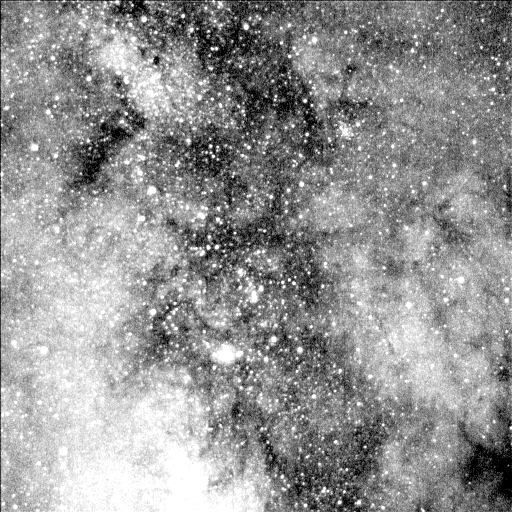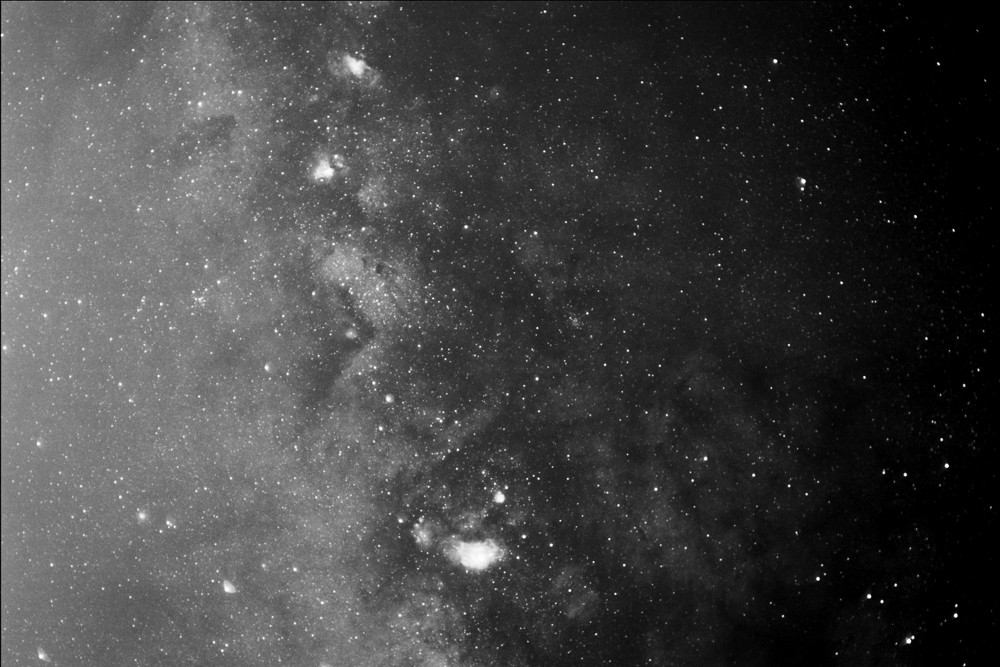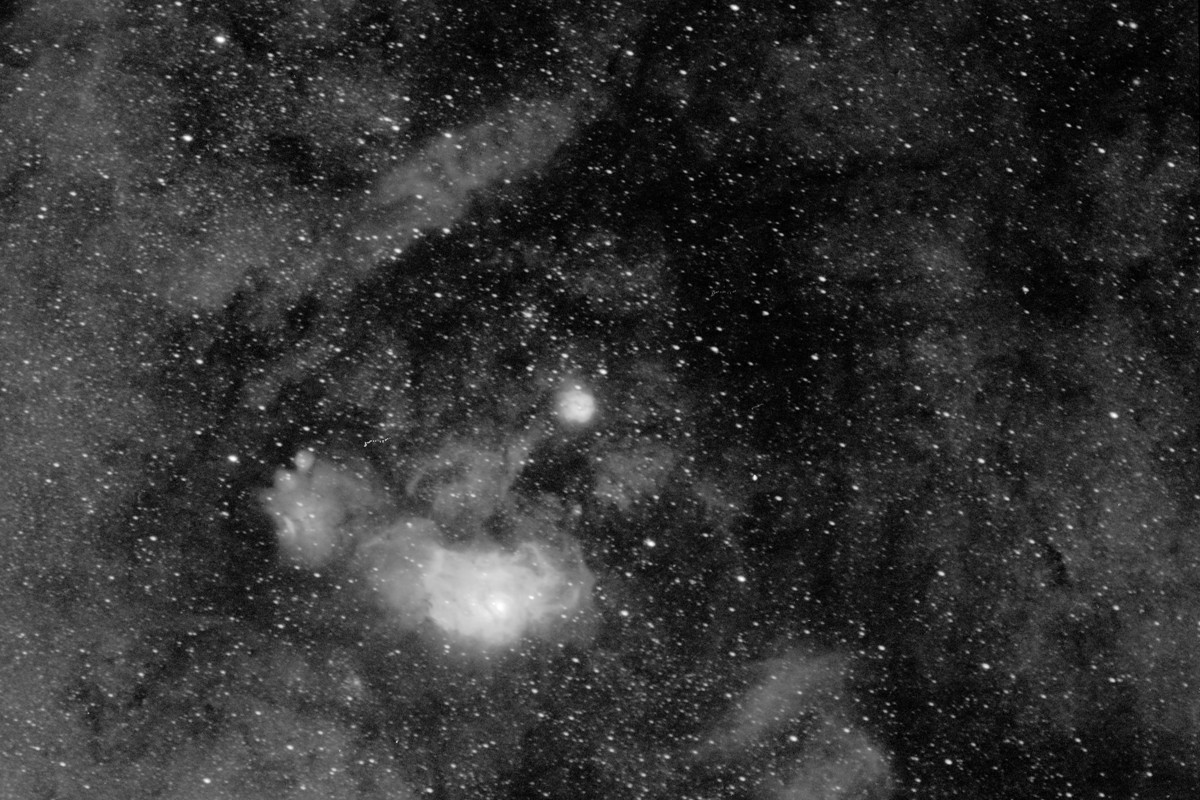
Combination of 50, 5 second exposures, SBIG ST9XE CCD camera.
50mm f/2.0 Nikkon lens.

In the Scorpius-Sagittarius region of the Milky Way and north into Serpens, there are probably more nebulae than anywhere else in the sky.
If nothing else, this image shows just how bright the Milky Way in the Scorpius-Sagittarius region is! This image was meant to show the emission nebulae M 8 and M 20. Both of these are visible in the image, however they are almost totally lost in the background stars, despite their being situated in the dark dust lanes. For wide-field CCD imaging, this is a region that either requires colour imaging to show it at its best, or the use of an H-alpha filter, as in the image below.

The image above is centred on three of the brightest nebulae; M8, M16, and M17. Also just above M8 is M20, the Trifid nebula. However in this image M20 looks very different from its usual appearence. This is because the H-alpha filter used to take the image has blocked the bright blue reflection portion of the nebula. Unfortunately clouds severely hindered the taking of the above image.
